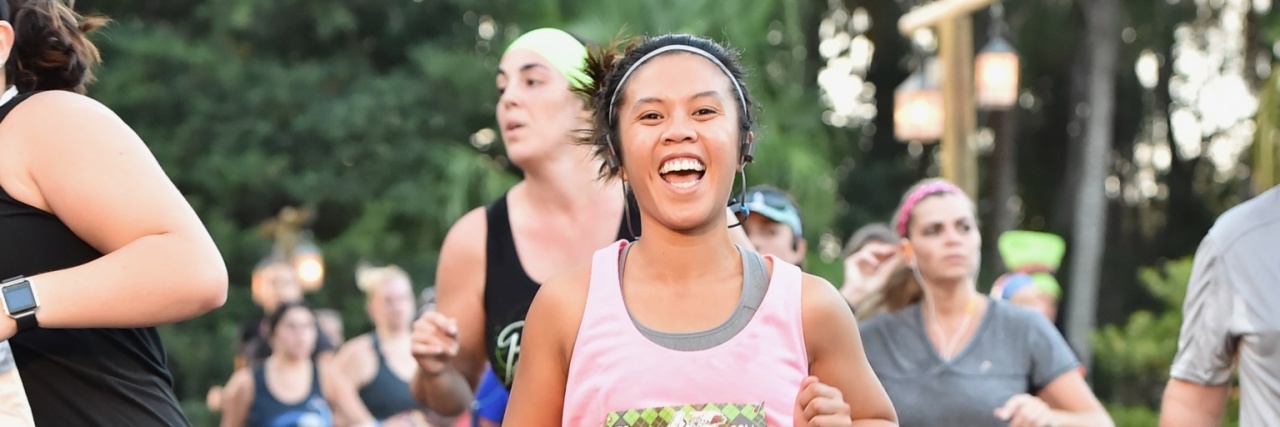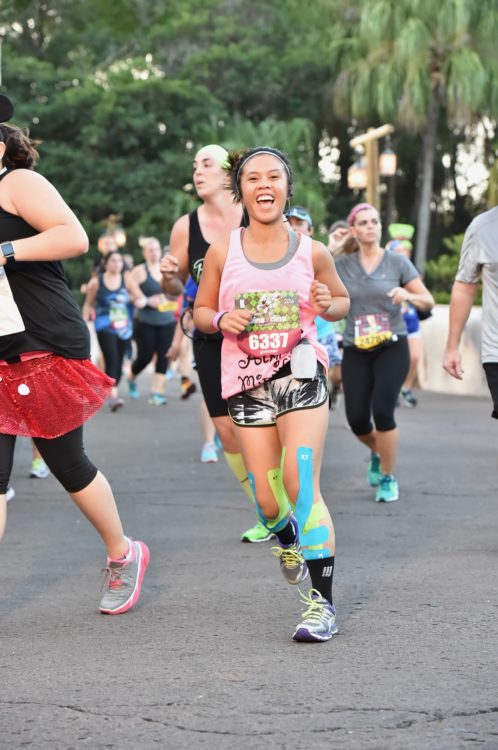Editor’s note: The following is based on an individual’s experience. Please consult your doctor before beginning new exercise or training programs.
At the age of 15 I was told I wouldn’t have a normal life again. At the age of 23 I ran my first half-marathon.
In spring 2008, I was diagnosed with an idiopathic autoimmune disease called juvenile dermatomyositis (also known as JDM). A disease diagnosed in children that can cause rashes, muscle inflammation and muscle weakness. When I received this diagnosis, I was in shock because I was only 15. The more I learned about my condition, the more I realized I wouldn’t be able to run, bike or swim anymore.
From then until now, I went through multiple treatments and remedies to ease down the disease. I am happy to say it has been in remission for the past five years, with the occasional flare-ups.
When I was told it was in remission, I wanted to prove to myself I was unstoppable, and that was when I decided to run the 2016 Disney World Wine & Dine Half Marathon. Prior to this race I had never run long distance but I believed I could accomplish this challenge.
I started with precaution. I did proper research, from self-care to running tips. I made appointments with a pulmonologist to be proactive about my exercise-induced asthma. I reached out to friends who were runners and asked them for tips on clothing and techniques. After gathering all the information, I had to keep in mind I have a chronic disease. So I had to take proper precautions and ensure I took proper safety measurements.
I used a calendar to track the amount of miles I would run until race day. I started in May and ended the week before my race in November. I would also sign up for 5Ks to test my progress in a race setting to prepare me for the actual day.
Having JDM for the previous nine years, I knew which foods were good and bad for my body. I had to also ensure I had the proper diet to keep my body in shape for the race. I consumed more vegetables, fruits and whole grains in addition to my daily protein intake. I drank more water and electrolytes. I also picked up dietary supplements and ergogenic aids to help me with my training performance.
I will say many emotions and thoughts went through my mind when I started training, where I’d compare my performance against people who have been running for years and didn’t have similar health conditions as me. It can either motivate or discourage you. When I felt discouraged, I found ways to turn it into positivity. One example was my belly pouch. I took prednisone when I got diagnosed and gained a lot of water weight. Since then I have struggled to get rid of my belly pouch, and I used that discouragement as motivation. By the end of my training my belly fat had decreased along with my waist size!
On race day, I was anxious and nervous. I told myself it was just another day of training. With each mile marker I got anxious and experienced multiple panic attacks. I would hyperventilate the closer I got to the finish line. All I could think was “Wow, I did it” and “They said it wasn’t possible but I made it possible.” Crossing the finish line was one of the biggest accomplishments in my life. I finished with a net time of 2:33:16.
The sense of accomplishment I felt could not compare to anything else. When the volunteers gave me my medal and congratulated me, I hyperventilated and cried. I was in disbelief and had to tell myself I actually did it – it actually happened! With the support of friends, family and my boyfriend (who did the race with me), I was able to accomplish this goal. And the constant encouragement from strangers and myself during the race helped make sure I crossed the finish line.
When you research JDM, it can be described as potentially life-threatening. It is also known there is no cure to this disease. I was told I wouldn’t live a normal life again and wouldn’t be able to be physically active.
It took a lot, but I did it. I still struggle every day with body aches, joint pains and fatigue. But when I look at how I was able to finish a half-marathon, I tell myself anything is possible.
We want to hear your story. Become a Mighty contributor here.


